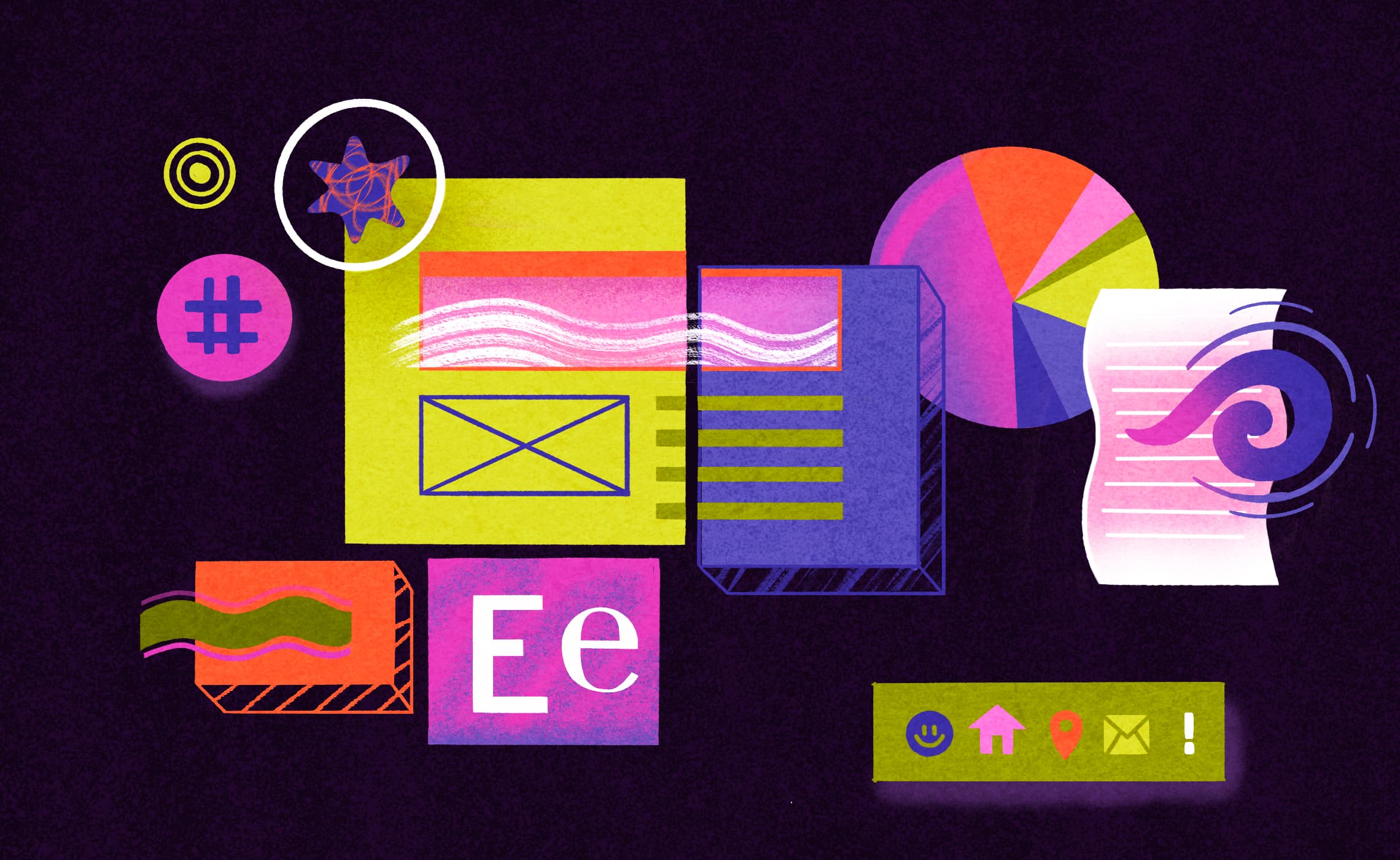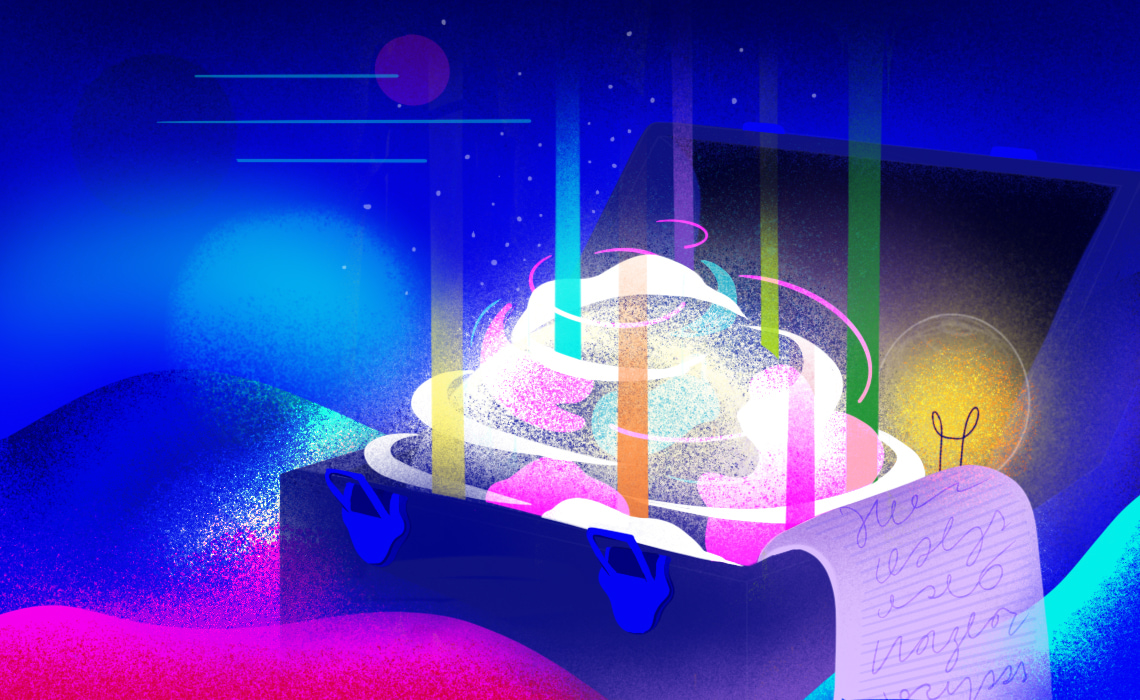Brand Systems: Strategy for Designing A Best in Class Brand Identity
Approx 6 min. read

Picture this: it is the first day of high school. You have done all the right things–trendy outfit, hip backpack, this cool thing called an iPod, new sneakers, crisp textbooks, are you with me? But what is truly at the forefront of your mind? Where to sit in the cafeteria. Who are your people? This is a decision that will probably impact your next four years, right? There aren’t signs on each table with each crowd’s mission and vision statement. But there is a table of ballers in their uniforms and school colors. There is the crew in all black and the crew in ripped denim and flannel. Maybe you belong over there with the acapella singers and their sheets of music or the gamers speaking tech. You need a crew that has got your back to hit the mall and game day with, or the library and the poetry slam. You are a small fish in a big pond just trying to find your way.
Maybe you didn’t know it at the time, but high school came with brand systems. It is a gold mine in terms of looking at the prescriptive power of visual organization. This concept carries as much gravitas in the mess hall as it does in the boardroom. People innately want to belong to something. Brand systems tap into our biology. They work for us, they organically lead us. They provide structure in a world of chaos.
Brand Systems 101: Elevate your Brand Identity
What is a brand system you may ask? It is a comprehensive visual narrative that drives every aspect of your brand and business. It’s your trapper keeper. A brand system is the sum of your mission and values, your promise to your employees and your consumers– made manifest. It is an ecosystem composed of visual, tangible and subliminal elements condensed into a digestible directive. Plain and simple well-curated brand systems elevate brands by unifying internally and externally. They set your table, and invite like minds to it.
How do we find our tribe? When we find them, how do we grow together? How do we stay connected, authentic, and relevant? Brand systems provide the navigation system. They show us where to sit in the cafeteria but they also answer these deeper questions.
Brand Systems and the Periodic Table of Their Elements
"Design has always been largely about systems, and how to create products in a scalable and repeatable way. From Pantone colors to Philips screws, these systems enable us to manage the chaos and create better products. Digital products are perhaps the most fertile ground for implementing these systems and yet it’s not often considered a priority.
A unified design system is essential to building better and faster; better because a cohesive experience is more easily understood by our users, and faster because it gives us a common language to work with." - Karri Saarinen, Airbnb Design Language System Lead
The elements of a congruent brand strategy include: language, logo, color palette, font, typography, iconography, tone, and layout. These components are the visual and verbal dialect of your brand. Let’s dig into the syllabus.
The Lingo & the Logo: Modern Art and the Art of Words
Language
The language of your brand system translates your vision, values, and mission. Maybe the words themselves are not unique, but strung together they paint the picture of your unique vision and business mantra. But, language is not just the paragraph on the about us page or your origin story.
Language speaks to your brand and language can be your brand. Maybe your brand becomes a verb and transcends across a platform, or a generation. Overnight a package, or FedEx it? Search the internet, or google it? This is the pot of gold at the end of the rainbow. Constructing your brand’s language is the backbone of your brand strategy.
Logo
The language used to communicate your message goes hand in hand with your calling card–the logo. It should be the magnet that draws your target base. Simplistic, relevant, relatable, distinctive, scalable and timeless are all boxes to be checked in development. Logos condense your identity and services into a simple visual. Your logo is the proverbial “Hi, my name is” sticker of your brand system.
“The best logos tell a story and convey a feeling. Whenever we develop an identity, we start with deep discovery and brand positioning, and our identity work is rooted in that strategy work. We also make sure that we develop logos with context in mind: where will it live? What products will it need to be applied to? How will the client use it? It means the finished product is never a surprise to the client and feels like the living, visual version of their brand story.” Amanda Lee Smith, Partner at Monday Creative.
Iconography
Some of the names on the logo All Star team include the likes of Target, Nike, FedEx, Apple. One of the elements that sets these brands apart is their “alternate” logo. The Target sign, the Nike “swoosh,” Apple’s apple. Alternate logos also help set the stage for creating a space to speak without words. This is accomplished by way of iconography, the set of visuals and symbology that accompany the brand’s identity. Often overlooked and underrated, iconography is a powerful tool to help navigate your brand both on and offline. Google and Apple have not only mastered iconography, but they have in a sense re-branded the word icon. Their symbology helps users and consumers navigate seamlessly through their apps and platforms in a revolutionary way. They made iconography great again.
Color, Typography & Layout: Most Likely to Succeed
Color
Connecting the dotted line between each element is the color palette chosen to represent your brand and identity. Selecting the colors that will represent your brand also helps solidify personality and draw in your customer base.
When we think of Apple, white is probably one of the first colors to come to mind. Designers presented the idea for white as a way to stand out from competitors–most tech products falling into some shade of silver/gray. According to a 2013 article from Insider Magazine, Steve Jobs actually hated the color white. Designers ended up presenting shades of gray so light they appeared white just to appease him. Out of this came a suite of colors like glacial white and moon gray. Eventually peppering in sleek black and the iconic space gray. Apple also used color to corner the market and make certain devices "covetable." Think apple rose gold. It is the chic simplicity and streamlined tech that consumers go back for iPhones–generation after generation.
Color drives brand loyalty plain and simple.
Close your eyes and picture a red sports car, are you conjuring the image of Ferrari? Of course you are. In the sector of luxury car makers, is there anything more iconic? Enzo Ferrari, founder of the Ferrari Grand Prix racing team and the epic Ferrari empire is known for famously stating: “Ask a child to draw a car, and certainly he will draw it red.” There is a reason red is considered to be the very vasculature of Ferrari. “Rosso Corsa is rooted in our DNA. We really believe it interprets the best link with the brand–it’s our most representative colour.” said Nicoa Boari, head of Ferrari product development. Ferrari’s signature red rosso corsa translates to “racing red.” The very color has the power to conjure emotion, nostalgia, and ultimately speaks of the power of color to become synonymous with a brand.
Type & Font
The personality of your brand is further strengthened by the typography and font used to translate your message. Choosing the correct serif and script gives customers context clues into who and what you are. The playful curves of the Airbnb font (and logo) are inviting and a little funky. The deep blue of the classic Old Navy font sends a versatile all-American vibe. Netflix is an excellent example of the power of brand fonts (and color) to become the basis of this brand’s identity. Lest we forget, 12pt Times New Roman has left many of us too traumatized from school essays to ever use it again. Font can evoke emotion as much as image and color. Choose your fonts wisely.
Tone
All of these elements help establish the tone of your brand. What you say is important but thinking about how you say it is just as key and a strategy of its own. Through short show-tune like clips, fun font, and sleek packaging, Lume Deoderant’s witty and comical tone makes the topic of body odor cute and funny. The personification of the brand you build with tone puts you in the driver's seat when it comes to dictating your own narrative. Tone is not any one thing, but in essence truly is the sum of its parts.
Layout
Finally, the color and typography help dictate the layout of your platform. Consistency in message is driven by consistency in design. Working with layouts is an invitation to play with space and hold space. Creating repeatable imagery, layouts, templates and verbiage solidifies your foothold in the market. A brand-driven layout establishes congruent rations between each of the different elements in a brand system.
Brand Systems, You Can Sit With Us
Your brand is a living breathing thing. Your brand system evolves as your vision and business evolves. It is important to note that an effective brand strategy transcends many disciplines, it thrives when all the moving parts of your organization live symbiotically and harmoniously.
The landscape of communication and media is fluid. As the quality of your image and platform matures the brand system is there to grow with you. Attention spans are fleeting, consumers are inundated with media and messaging that can pollute and dilute consumer markets.
A cohesive brand system can be weaponized to establish what is called “brand recall.” This is armor against the fleeting attention spans and chronic scrollers. This strengthens your relevancy in your niche market and is a vital step in establishing brand loyalty and growing your customer base in the future.
Distilled into its organic elements, carefully and consciously developing a brand system or branding “kit” sets your company apart. Doing the work to establish each of these elements as you carve out your own unique identity will deliver you into the hands of your target audience. The language and visuals that comprise your brand should spark curiosity and awaken conversation. Brand strategy gives you the rubric for a successful brand and platform.
The design team from Microsoft has this to say about their brand system Fluent: "Fluent is an open-source, cross-platform design system that gives designers and developers the frameworks they need to create engaging product experiences- accessibility, internationalization, and performance included."
Where to start? Answer simple questions like who are you? What do you stand for? Establish brand guidelines. Research competitors and examples. Become a factory for ideas. Create. Ultimately, collaborate with trailblazers and out-of-the-box thinkers who have already developed their own successful brand system. Brand design truly is an artform. Head to the drawing board, class dismissed.
Related posts
Food for thought.

Primal Branding: The Who What When Where Why of Building Iconic Brands
by Brian Sena
